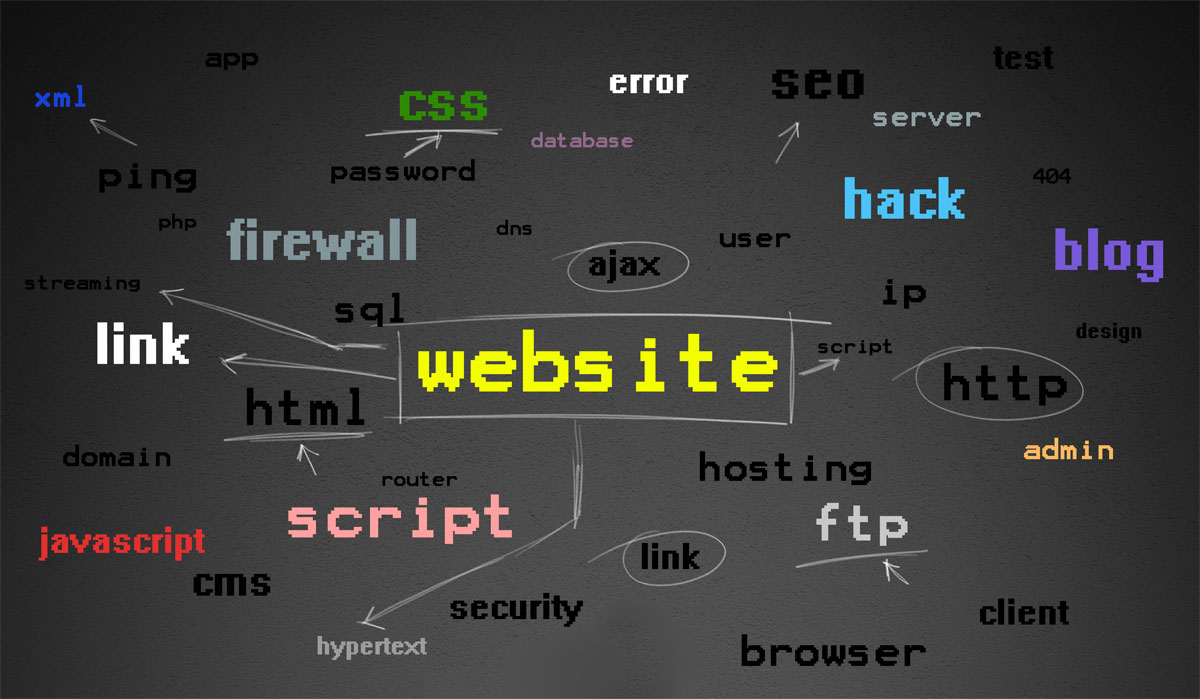Mastering Full Stack Development

In today’s fast-changing tech world, everyone wants websites and apps that are both flexible and strong. Businesses and people alike want smooth online experiences. This is why full stack developers are so important now. They are the builders of the complete solutions that power our online lives. They connect the part of the app we see and use with the behind-the-scenes tech that makes it all work.
This blog serves as a beacon for those embarking on the journey of full stack application development, offering a clear pathway from conceptualization to deployment. Whether you’re taking your first steps into coding or are an experienced developer looking to broaden your skill set, understanding the full spectrum of building a full stack application is your key to unlocking new opportunities. We’ll explore what full stack development entails, full stack application ideas, uncover its myriad benefits, and walk through the development process with practical steps.
What Is a Full Stack Application?
So, what is a full stack application? A full stack application refers to a software solution that encompasses both the front-end (client side) and the back-end (server side) components. This holistic approach allows developers to build, manage, and deploy the entire spectrum of an application, from user interface design to database management.
The front-end is what users interact with directly. It includes everything visible on the screen, such as text, buttons, images, and the overall layout. Technologies commonly used for front-end development include HTML, CSS, and JavaScript, with frameworks like React, Angular, and Vue.js offering more dynamic and responsive designs.
A Full Stack Web Application is a software solution that integrates both front-end and back-end development, allowing seamless interaction between users and databases. The front-end focuses on the user interface, utilizing technologies like HTML, CSS and JavaScript, while the back-end manages data processing with frameworks like Node.js, Django, or Ruby on Rails. A Full Stack Web Application ensures efficient functionality, combining client-side and server-side development to create dynamic, scalable and user-friendly platforms. This approach is widely used in e-commerce, social media and enterprise software, making it an essential skill for modern web developers.
The back-end, on the other hand, operates behind the scenes. It is responsible for managing the server, the application, and the database. Back-end developers use programming languages like Python, Ruby, Java, and Node.js to create the logic that powers the application, and technologies like MySQL, MongoDB, and PostgreSQL to manage data storage.
Some popular full stack application ideas include:
- Social media platforms
- E-commerce websites
- Food delivery applications
- Chat messaging applications
- Content Management Systems
Benefits of Full Stack Application Development
Now that you understand what is a full stack application, here are the primary benefits of developing and deploying such applications:
- Versatility and Job Market Appeal: Full stack developers are akin to Swiss Army knives in the tech world, equipped with a broad skill set that allows them to handle multiple aspects of web development. This versatility makes them exceptionally attractive in the job market, where the ability to navigate both front-end and back-end territories is a prized asset.
- Cost Efficiency for Businesses: For organizations, the allure of full stack developers lies in their ability to wear multiple hats. By having team members who can efficiently transition between front-end and back-end tasks, companies can streamline their development process. This not only accelerates the development cycle but also significantly reduces the costs associated with hiring specialized personnel for different layers of development.
- Flexibility and Efficiency in Development: Full stack developers possess the unique ability to pivot between designing the user experience and engineering the server-side logic. This flexibility ensures that projects can progress more fluidly, without the bottlenecks that often occur when waiting for specialized team members. It fosters a more integrated and efficient development process, with developers capable of addressing issues across the full stack without dependency on others.
- Comprehensive Understanding and Problem-Solving: By mastering both ends of the development spectrum, full stack developers gain a holistic view of web applications. This comprehensive perspective is crucial for troubleshooting and optimizing performance, as understanding how various parts of an application interact allows for more effective problem-solving and innovation.
How to Develop a Full Stack Application
Developing a full-stack application is a multi-faceted and intricate process that involves a series of deliberate and strategic steps. This detailed guide will take you through each phase of development, offering a comprehensive pathway to understand how to build a full stack application.
To build a full stack application, start by selecting the right technology stack. The front-end typically uses React, Angular, or Vue.js for dynamic interfaces. For the back-end, Node.js, Django, or Ruby on Rails handle data and business logic. A database like MongoDB, PostgreSQL, or MySQL is essential for data storage. To build a full stack application efficiently, integrate APIs for seamless communication between the front-end and back-end. Use authentication tools like JWT or OAuth for security. Deploy the application on cloud platforms like AWS, Firebase, or Heroku to ensure scalability and reliability.
Step 1: Project Conceptualization and Planning
When thinking about how to develop a full stack application, the journey begins with project conceptualization and planning, where the foundation for the entire application is laid. This stage requires a deep understanding of the application’s purpose, identifying the specific problems it aims to solve, and recognizing its target audience. It is crucial to have a clear vision at this point, as it guides all subsequent decisions.
A detailed project roadmap or a requirements document should be developed, outlining the application’s key features, functionalities, and user stories. These documents become the blueprint that will guide the development process, ensuring that the project stays on track and aligns with the initial goals.
Step 2: Selection of Technology Stack
Once the planning phase is complete when trying to build a full stack application, the next step is selecting the appropriate technology stack for both front-end and back-end development. This decision is critical as it affects the scalability, performance, and overall success of the application.
Factors to consider include the application’s scalability requirements, the development team’s proficiency with the chosen technologies, and the availability of community support and resources. The technology stack should comprise programming languages, frameworks, and tools that best fit the application’s needs and the team’s strengths, ensuring a robust and efficient development process.
Step 3: Design the User Interface and User Experience (UI/UX)
When it comes to building a full stack application, designing an intuitive and appealing user interface is paramount for ensuring a positive user experience. This phase starts with the creation of wireframes to sketch out the basic layout of the application’s pages, providing a visual guide for the overall design. High-fidelity designs are then developed, taking into consideration the user experience by ensuring that navigation and interactions are logical, intuitive, and user-friendly. The goal is to create a design that not only looks good but also enhances usability and user engagement.
Step 4: Front-end Development
With the designs in hand, the next phase is front-end development. This stage involves bringing the designs to life by coding the visual elements of the application. Developers use the selected technologies to build responsive and dynamic interfaces, ensuring the application is accessible and performs well across various devices. This phase focuses on implementing the client-side logic, making the application interactive and engaging for users when building a full stack application.
Step 5: Back-end Development
In parallel with front-end development, back-end development focuses on establishing the server-side logic and infrastructure of the application. This includes setting up servers, creating databases, and developing the application programming interface (API) that facilitates communication between the front-end and back-end. It is essential to ensure that the back-end is secure, scalable, and capable of handling the application’s expected load, laying a solid foundation for the application’s functionality.
Step 6: Testing
Rigorous testing is essential to ensure that the application is reliable, secure, and free from bugs. This phase encompasses various types of testing, including unit testing, integration testing, and user acceptance testing (UAT). Automated testing tools are often employed to streamline the process. Additionally, beta testing with real users can provide valuable feedback on the application’s usability and identify areas for improvement.
Step 7: Deployment and Maintenance
The final step in the development process is deploying the application to a production environment. This involves selecting a reliable hosting provider and potentially using continuous integration/continuous deployment (CI/CD) pipelines to facilitate smoother updates in the future. Once deployed, the focus shifts to ongoing maintenance, monitoring the application for any issues, and regularly updating it with improvements or new features based on user feedback and evolving requirements.
By following these steps, developers can systematically approach the complex process of full stack application development, ensuring a solid foundation for building comprehensive and scalable web applications.
BuzzyBrains: Empowering Full Stack Development
BuzzyBrains excels in developing comprehensive full stack application architecture, seamlessly integrating front-end and back-end technologies to deliver robust and scalable solutions. Their approach begins with meticulous planning, understanding client requirements to design applications that are both user-friendly and efficient. On the front-end, BuzzyBrains employs modern frameworks like React and Angular to create dynamic interfaces, ensuring an engaging user experience. For the back-end, they utilize powerful technologies such as Node.js and Django, coupled with databases like MongoDB and PostgreSQL, to manage data effectively and ensure smooth server operations. This harmonious integration forms a resilient full stack application architecture that supports scalability and adaptability, catering to evolving business needs.
Furthermore, BuzzyBrains emphasizes rigorous testing and quality assurance, identifying and rectifying potential issues to maintain high performance and security standards. Their commitment to continuous deployment and integration ensures that applications remain up-to-date with the latest features and security patches. By leveraging this comprehensive approach, BuzzyBrains empowers businesses to achieve their digital objectives, providing tailored solutions that drive growth and operational efficiency.
As BuzzyBrains, we pride ourselves on being a leading full stack development company in India. Our expertise spans across product engineering, custom software development, mobile application development, and more, leveraging the latest tools and technologies.
We are committed to delivering exceptional, custom-built software products for startups and SMBs, ensuring our solutions are scalable, secure, and innovative. Our dedicated team of technology connoisseurs works closely with clients to transform their business ideas into reality, with a focus on quality, transparency, and timely delivery.
Conclusion
In the vast and dynamic realm of software development, full stack application development stands out as a multifaceted journey that combines creativity with technical prowess. By mastering the intricacies of both front-end and back-end development, professionals unlock a treasure trove of opportunities, crafting applications that are not only comprehensive and efficient but also brimming with innovation.
The advantages of embracing full stack development extend beyond the versatility and cost-efficiency it brings; it fosters a profound understanding of the intricate dynamics between the user interface and the server operations. This holistic approach empowers developers to envision and execute solutions that are finely tuned to the demands of the digital age, driving forward the endless cycle of learning and discovery in the pursuit of technological excellence.
